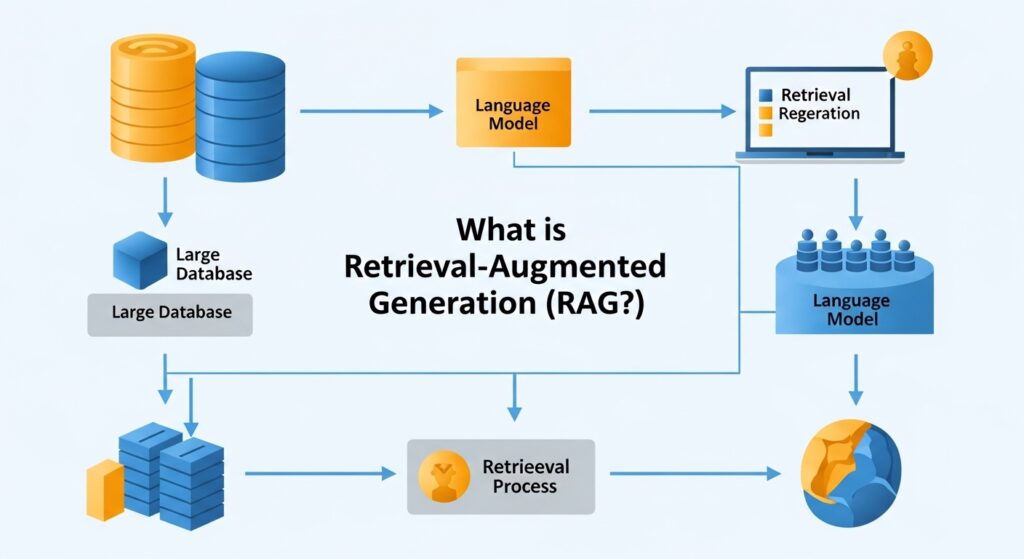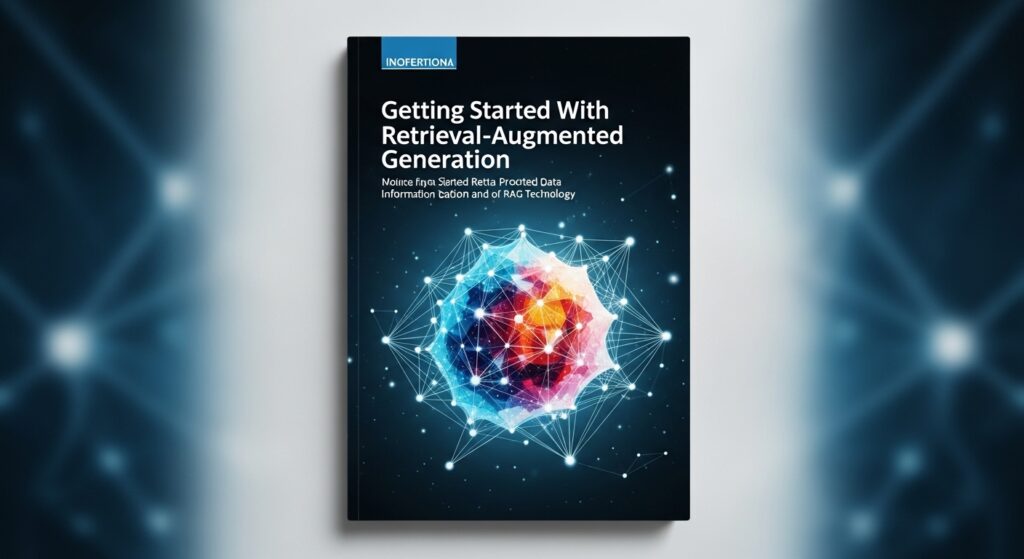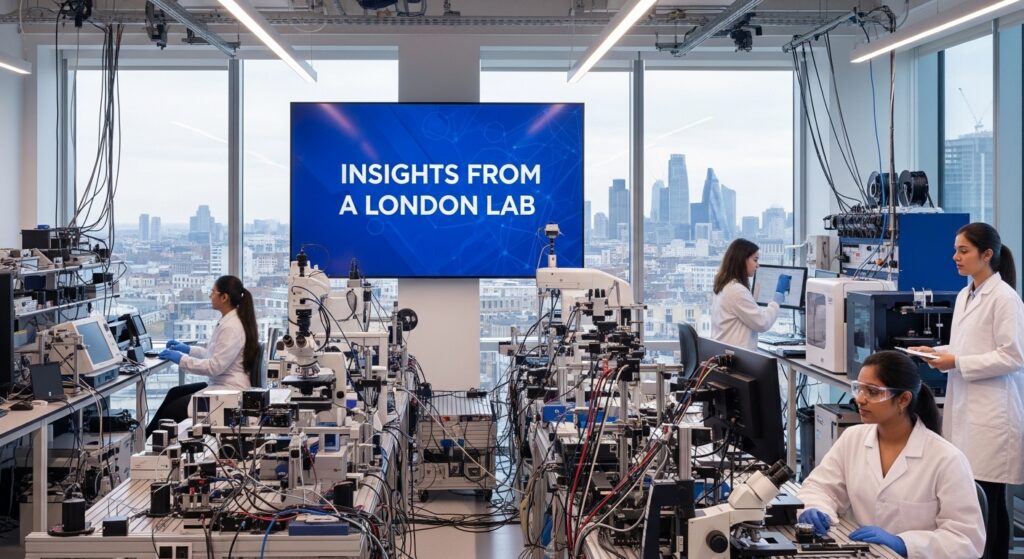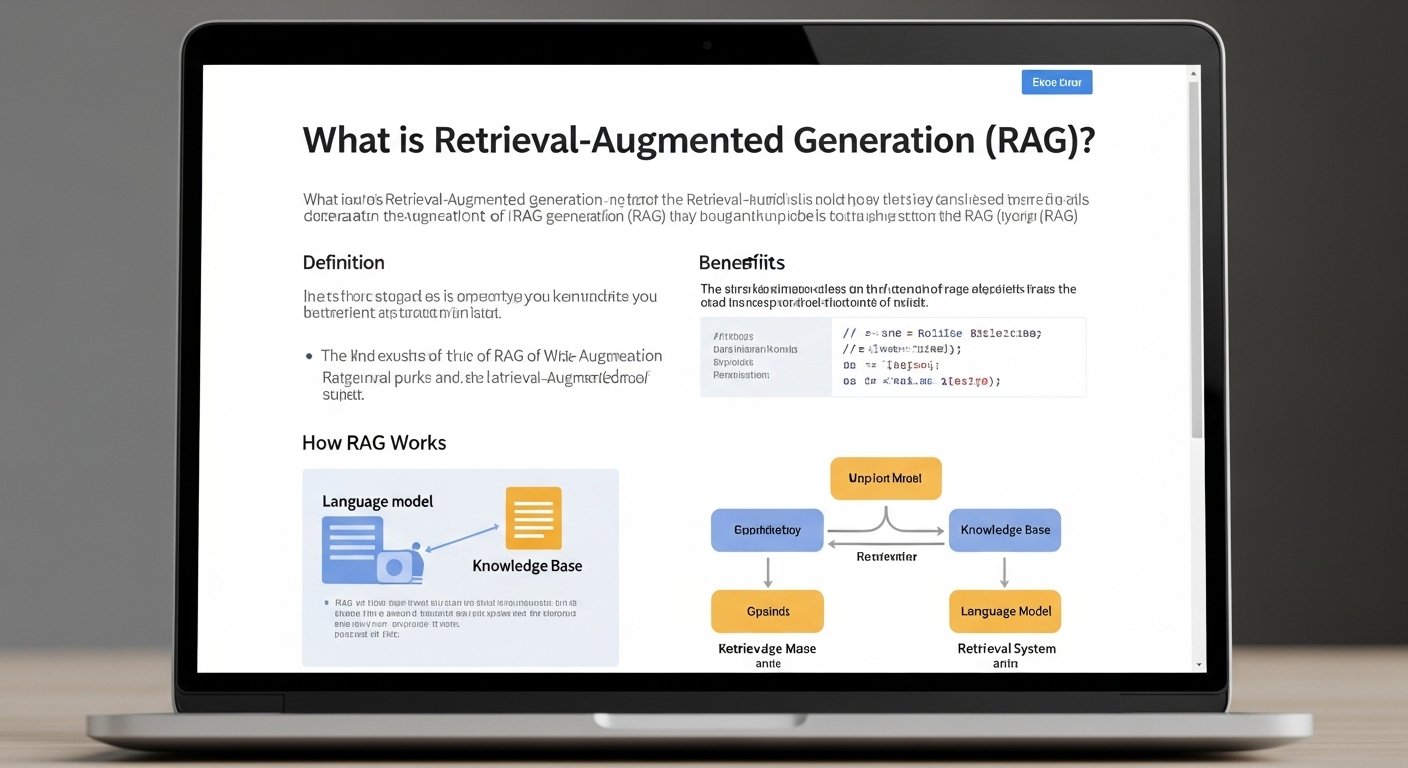Retrieval-Augmented Generation is transforming how artificial intelligence systems work. This powerful technique combines natural language processing with external data sources. It helps AI models provide more accurate and reliable answers.
Think of it like a smart assistant with access to a vast library. When you ask a question, it doesn’t just rely on memorized information. Instead, it searches through relevant documents to find the best answer. This approach reduces errors and increases trust in AI responses.
How It Got Named ‘RAG’?
Patrick Lewis led the research team that created this technology in 2020. He admits the name wasn’t their first choice. The team wanted something more appealing but couldn’t find a better option.
Lewis now works at Cohere, an AI startup. He says they would have chosen a different name if they knew how popular it would become. The semantic analysis behind RAG has influenced hundreds of research papers since then.
The acronym stuck because it describes the process perfectly. Retrieval means finding relevant information. Augmented means enhancing existing capabilities. Generation refers to creating new text responses.
READ THIS BLOG : Iman Gadzhi’s Total Net Worth in 2025
So, What Is Retrieval-Augmented Generation (RAG)?
RAG fills a crucial gap in how large language models work. Traditional AI models rely on parameterized knowledge learned during training. This works well for general questions but falls short for specific topics.
The technique uses information extraction to pull relevant data from external sources. It then combines this information with the AI’s existing knowledge. This creates more comprehensive and accurate responses.

Text preprocessing plays a vital role in this process. The system must clean and organize data before use. Tokenization breaks text into smaller pieces for analysis. Stop words removal eliminates unnecessary terms.
Combining Internal, External Resources
RAG connects AI models to external databases and knowledge bases. This connection happens through word embeddings and vector representations. The system converts text into numerical formats that machines can understand.
Semantic similarity helps identify relevant information. The AI compares query vectors with document vectors using cosine similarity. This mathematical approach ensures accurate matching between questions and answers.
Document similarity calculations help rank retrieved information. The system uses TF-IDF scoring to determine relevance. This process considers both term frequency and document importance.
Building User Trust
One major advantage of RAG is transparency. The system can cite sources like footnotes in research papers. Users can verify claims by checking the original documents. This builds confidence in AI responses.
Sentiment analysis helps evaluate source quality. The system can assess whether information comes from reliable sources. Named entity recognition identifies key people, places, and organizations mentioned in texts.
RAG also reduces hallucination in AI responses. Hallucination occurs when models generate plausible but incorrect information. By grounding answers in real data, RAG minimizes this problem.
How People Are Using RAG?
Healthcare professionals use RAG systems linked to medical databases. These tools help doctors and nurses access current treatment guidelines. Text classification organizes medical information by specialty and condition.
Financial analysts benefit from RAG systems connected to market data. These tools provide real-time insights for investment decisions. Corpus linguistics helps analyze financial reports and news articles.
Customer service teams use RAG to access company knowledge bases. This enables faster and more accurate responses to customer inquiries. Language modeling helps generate appropriate responses for different situations.
Getting Started With Retrieval-Augmented Generation
NVIDIA offers blueprints for building RAG systems. These resources help developers create custom AI applications. The company provides both cloud-based and on-premises solutions.
Dimensionality reduction techniques help manage large datasets efficiently. Singular value decomposition compresses information while preserving meaning. This makes RAG systems faster and more efficient.

Personal computers can now run RAG applications locally. This keeps sensitive data private while providing AI assistance. Semantic indexing organizes personal documents for easy retrieval.
The History of RAG
The concept traces back to the early 1970s. Researchers developed question-answering systems for specific topics like baseball. These early systems used basic natural language processing techniques.
Ask Jeeves popularized question-answering in the 1990s. The service used a well-dressed butler mascot to represent helpful AI assistance. IBM’s Watson later demonstrated the power of advanced question-answering on Jeopardy!
Modern RAG systems benefit from advances in machine learning and deep learning. Syntactic parsing helps understand sentence structure. Part-of-speech tagging identifies grammatical roles of words.
Insights From a London Lab
The breakthrough came from University College London and Meta AI researchers. They wanted to pack more knowledge into AI model parameters. Their work combined retrieval systems with generative models.

Semantic space representations made this combination possible. The team used term-document matrices to organize information. Latent semantic analysis helped identify hidden patterns in text data.
The first results exceeded expectations. The system could generate accurate responses while citing relevant sources. This success launched hundreds of follow-up research projects.
How Retrieval-Augmented Generation Works?
When users ask questions, the AI converts queries into numerical vectors. Word embeddings represent words as points in high-dimensional space. Similar concepts cluster together in this semantic space.
The system searches through indexed documents using vector similarity. It finds the most relevant information based on cosine similarity scores. Stemming and lemmatization help match different word forms.
Retrieved information combines with the AI’s response to create a final answer. Text normalization ensures consistent formatting. The system can include citations and confidence scores.
READ THIS BLOG : Best Perfumes for Women in the World
Keeping Sources Current
RAG systems continuously update their knowledge bases. New documents get processed through text preprocessing pipelines. N-grams analysis helps identify key phrases and concepts.
Bag of words models provide baseline text representations. More advanced systems use transformer models for better understanding. Semantic analysis ensures new information integrates properly with existing knowledge.
Automated systems monitor source quality and relevance. Information extraction pulls key facts from new documents. This keeps RAG systems current with the latest information.
Frequently Asked Questions
What makes RAG different from regular AI chatbots?
RAG systems access external databases in real-time, while regular chatbots only use pre-trained information that may be outdated.
Can RAG systems work with any type of document?
Yes, RAG can process various document types including text files, PDFs, web pages, and structured databases through appropriate preprocessing.
How accurate are RAG-powered AI responses?
RAG significantly improves accuracy by grounding responses in verified sources, though quality depends on the underlying data sources.
Do I need technical expertise to use RAG systems?
Many RAG applications are user-friendly and require no technical knowledge, though building custom systems needs programming skills.
Can RAG systems work offline?
Yes, RAG systems can work offline if the knowledge base and AI model are stored locally on your device.
Conclusion
Retrieval-Augmented Generation represents a significant advancement in AI technology. It combines the flexibility of large language models with the accuracy of external data sources. This approach addresses key limitations of traditional AI systems.
The technology continues evolving rapidly. New techniques in natural language processing and semantic analysis make RAG systems more powerful. Information extraction methods become more sophisticated each year.

